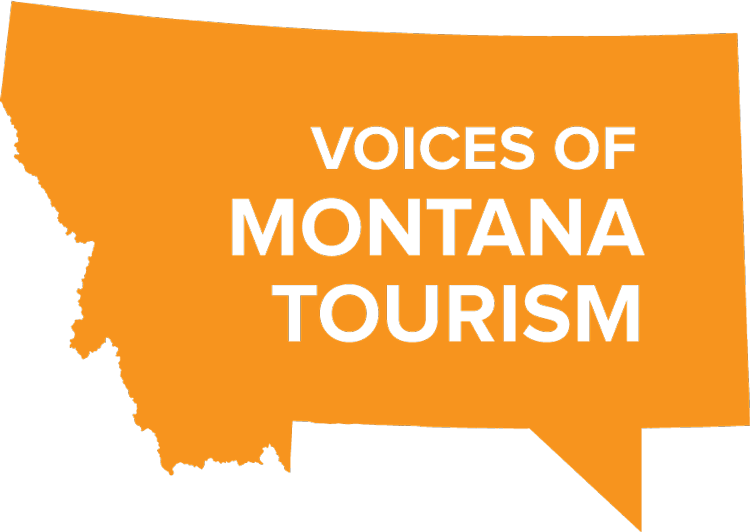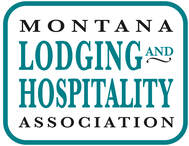What reservation(s) do I need to enter Glacier National Park?+
In 2024, a vehicle reservation is required for three areas of the park: the west side of Going-to-the-Sun Road, the North Fork and Many Glacier. Each location has unique details and requires a separate reservation.
Every vehicle entering the Going-to-the-Sun Road beyond the Apgar Village area from May 24 through September 8, 2024, between the hours of 6 a.m. and 3 p.m., will need to have a vehicle reservation. The vehicle reservation is good for one day.
New in 2024, visitors will be able to access Apgar Village amenities, including the Apgar Visitor Center, without a vehicle reservation. Lodging, camping (including front country developed campgrounds and backcountry camping permits), transportation, and commercial activity reservations originating in Apgar will no longer provide access beyond the Apgar filter check point.
Reservations will not be required at the St. Mary Entrance for Going-to-the-Sun Road.
Every vehicle entering the park in the North Fork area through the Polebridge entrance station from May 24 to September 8, 2024, between the hours of 6 a.m. and 3 p.m., will need a vehicle reservation. The North Fork vehicle reservation is good for one day.
Every vehicle entering the Many Glacier Valley from July 1 through September 8, 2024, between the hours of 6 a.m. and 3 p.m., will need a vehicle reservation. The Many Glacier vehicle reservation is good for one day.
Again, the Going-to-the-Sun Road, North Fork and Many Glacier vehicle reservations are three separate reservations.
Vehicle reservations will be available through two types of booking windows. A portion of reservations will be available approximately four months, or 120-days, in advance, on a rolling basis. These advance reservations will be available through recreation.gov at 8 a.m. Mountain Time starting January 25, 2024. The remaining reservations will be available on at 7 p.m. Mountain Time for next-day entry starting on May 23, 2024.
Vehicle reservations must be purchased online at recreation.gov in advance or by contacting the call center at 877.444.6777 (toll-free), 606.515.6777 (international) or 877.833.6777 (TDD). Although the park does not charge for reservations, recreation.gov charges a $2 nonrefundable service fee.
You will only need one vehicle reservation no matter how many people are traveling in your vehicle.
You cannot give or sell your vehicle reservation to someone else. The purchaser of the reservation must be in the vehicle entering the park.
Print or save a digital copy (e.g., screenshot) of your Vehicle Reservation or valid service reservation. Cell service is unreliable (and in some areas unavailable) in the park.
In addition to a vehicle reservation, each vehicle entering the park is required to have an entrance pass for any entry point into the park. These passes could include any one of the following: a $35 vehicle pass, good for seven days; a valid Interagency Annual/Lifetime Pass; or a Glacier National Park Annual Pass (including Military, Access, Senior, and Every Kid Outdoors passes).
What if I can’t get a vehicle reservation?+
You can enter the park from any entrance after 3 p.m. or before 6 a.m. Fortunately, it stays light until after 10 p.m. in the summertime in Montana.
You can enter the park from the St. Mary or Two Medicine entrances.
You can park in Apgar and take the free shuttles further into the park. Summer shuttle service begins July 1 and continues through Labor Day.
There are plenty of amazing things to do and see just outside the park. For inspiration, visit our Outside the Park page.
Is there a shuttle on Going-to-the-Sun Road?+
Yes! Glacier National Park runs shuttles along the Going-to-the-Sun Road from Apgar Visitor Center to St. Mary Visitor Center. Find out more information, including stops and schedules, here.
How long is the Going-to-the-Sun Road and how much time will it take me to drive it?+
Approximately 50 miles between its west entrance at West Glacier and its east entrance at St. Mary. The length of time it takes you will depend. There are various points of interest along the length of the road, as well as short hikes, if you’re inclined to pull over. Without stopping, it takes about two hours, but always plan for more time due to traffic congestion.
How far is it to Logan Pass and the Logan Pass Visitor Center?+
From the west entrance at West Glacier, Logan Pass is 32 miles. From the east entrance at St. Mary, it’s 18 miles.
What are the opening and closing dates for the Going-to-the-Sun Road?+
The road is typically open from mid-June until mid-October, weather dependent. For current road status updates throughout the park, visit the National Park Service website.
How do I find out about Glacier National Park road statuses, opening dates and trail closures?+
Weather and road conditions in the park can be unpredictable. For real-time information, the Glacier National Park Twitter feed is an excellent source of information. You can also consult the Logan Pass Visitor Center, Apgar Visitor Center, Glacier National Park Headquarters or the visitor information center. The National Park Service also has detailed reports on the status of park roads.
A new way to stay up-to-date is to sign up to receive Glacier National Park notifications via text:
- For TRAIL updates, closures and postings, text GNPTRAILS to 333111.
- For CAMPGROUND updates and fill notifications, text GNPCGS to 333111.
- For ROAD updates, including openings and closures, text GNPROADS to 333111.
Where are the entrances to the park located?+
West, Camas and North Fork Entrances:
From Kalispell, Whitefish and Columbia Falls, use the west entrance in West Glacier, which provides access to the Lake McDonald area, Park Headquarters and the Apgar Visitor Center, and is the only west entry point to the Going-to-the-Sun Road.
From Kalispell, head 30 miles northeast on U.S. Highway 2.
The west entrance in West Glacier is about 25 miles from Whitefish. Head south on U.S. Highway 93, turn left onto State Highway 40 E and continue onto U.S. Highway 2 E.
The west entrance is about 15 miles from Columbia Falls on U.S. 2 E.
The North Fork entrance is about 35 miles from Columbia Falls. From Highway 2, turn right onto Nucleus Drive, which becomes Outer North Fork Road. Take this mostly dirt road the 35 miles to Polebridge and hang a right. The Ranger Station lies just up the road from the mercantile.
The Camas entrance is 14 miles south of Polebridge on the North Fork Road.
St. Mary, Two Medicine and Many Glacier Entrances:
From Great Falls and Browning, use the St. Mary, Two Medicine or Many Glacier entrances, which can all be reached by taking Highway 89 north from Great Falls to Browning (125 miles) and then following the signs to the respective entrance.
The St. Mary entrance provides access to the Going-to-the-Sun Road as well as the St. Mary Visitor Center and services at Rising Sun.
The Many Glacier entrance provides access to the Many Glacier Valley and visitor services at the Many Glacier Hotel and the Swiftcurrent Motor Inn.
For more information, as well as details about entering the park by car, train or shuttle, visit the National Park Service website.
Are there vehicle size restrictions on the Going-to-the-Sun Road?+
Yes. Vehicles and vehicle combinations longer than 21 feet and wider than 8 feet (including mirrors) are prohibited between Avalanche Creek and Rising Sun. Due to rock overhangs, vehicle and vehicle combinations more than 10 feet may have difficulty driving west from Logan Pass to the Loop.
Can I ride my bicycle on the Going-to-the-Sun Road?+
You can and you should. Every spring, cyclists enjoy the road before it’s open to vehicular traffic. For safety reasons, bicycles are restricted from parts of the road from June 15 through Labor Day—peak visiting time. Fall is also a gorgeous time to bike the road. Visit the National Park Service website for more information about road closures due to plowing and peak-season visiting, as well as rules and restrictions.
Is it scary to drive the Going-to-the-Sun Road?+
The Going-to-the-Sun Road is a two-lane, narrow road, reaching an elevation of 6,646 feet. From the road, visitors experience breathtaking views of valleys and mountains, and at times the drop-off from the road is steep. The road has a stone wall or guard rail on the outside lane, for safety. For those with issues with heights, the east to west route will keep you on the inside lane.
Can I see a glacier from the Going-to-the-Sun Road?+
You certainly can. Jackson Glacier Overlook affords the best opportunity to see a glacier from the road. Jackson Glacier Overlook is located on the east side of the Going-to-the-Sun Road between Logan Pass and St. Mary.
Are there campgrounds located along the Going-to-the-Sun Road?+
Yes, five out of 13 campgrounds in Glacier are located along the road: Apgar, Sprague Creek, Avalanche, Rising Sun and St. Mary. Be aware that reservations are needed in advance for Apgar, Sprague and St. Mary campgrounds.
Are services like gas, lodging, food and picnic areas available on the Going-to-the-Sun Road?+
Gas is not available anywhere in the park or on the Going-to-the-Sun Road. Gas is available in East Glacier, West Glacier and St. Mary, as well as other surrounding communities. Food (breakfast, lunch and dinner) and lodging can be found at Rising Sun, Lake McDonald Lodge, Many Glacier and Apgar Village. Picnic areas can be found at Rising Sun, Sun Point, Avalanche, Sprague Creek and Apgar. Two Medicine has a general store and picnicking areas as well.
Are services like gas, lodging, food and picnic areas available on the way to the North Fork/Polebridge Entrance Station?+
There are limited to no services available along the 35-mile, mostly dirt Outside North Fork Road leading to Polebridge.
What is the speed limit on the Going-to-the-Sun Road?+
For safety reasons, 45 miles per hour is the speed limit in the lower elevations of the road and 25 miles per hour in the alpine section.
What is the maximum elevation on the Going-to-the-Sun Road?+
Logan Pass is the highest point on the Going-to-the-Sun Road at 6,646 feet.
Where can I see wildlife along the Going-to-the-Sun Road?+
Glacier National Park is wild country, and wildlife may be present anywhere along the Going-to-the-Sun Road. Mountain goats and bighorn sheep are typically seen near Logan Pass. Wildlife can often be spotted in the Many Glacier Valley—north of the east entrance at St. Mary. Don’t get too close! Wildlife is just that—wild. Do not approach wildlife. Visitors are required to keep a distance of at least 100 yards from bears and wolves, and 25 yards from any other wildlife, including nesting birds. Visit our wildlife safety page for more information about viewing wildlife safely.
What kind of weather can I expect while driving?+
Glacier's western valleys tend to receive the most rainfall. Summer daytime temperatures can reach above 90 degrees Fahrenheit (expect slightly cooler temperatures in the higher elevations). Overnight lows can drop to about 20 degrees Fahrenheit and snow can fall at any time. Be prepared for a variety of weather conditions and pack accordingly, dress in layers and always bring rain gear.
When is the best time of year to visit the park and travel along the Going-to-the-Sun Road?+
Glacier National Park is breathtakingly beautiful in every season. While summer is our most popular time to visit, you can avoid crowds (especially at Logan Pass) and take advantage of shoulder-season prices if you visit during the spring or fall. Spring is the perfect time to bike the Going-to-the-Sun Road before it’s open to vehicular traffic and fall paints the park in stunning autumn hues. Both shoulder seasons are also excellent times to view park wildlife. Most of the Going-to-the-Sun Road is closed to vehicles in the winter, but visitors can snowshoe or Nordic ski the road amid a jaw-dropping wonderland of pure white. It’s our quietest and most magical time of year.
Does the park get really crowded in the summertime?+
Vehicle reservation has alleviated many of the park’s overcrowding problems at the West Glacier and St. Mary entrances and along the Going-to-the Sun Road. However, vehicle reservations and service reservations do not guarantee parking spaces in popular areas. Expect the possibility of congested and busy conditions throughout the park, and always have a backup plan.
Plan ahead. Book rental cars, accommodations and activities well in advance.
Is there any way to know how busy the park is before I enter?+
The Glacier National Park website and Twitter feed have real-time updates on parking lot statuses, road closures, weather, and other important visitor information. Check out their webcams to live views of some of Glacier’s most popular areas.
Are dogs allowed in the park?+
In general, no. We recommend boarding your pet with Glacier Bark Kennels in Columbia Falls or another nearby kennel. Be aware that there are not any boarding facilities on the east side of the park and that you should make reservations well in advance.
Are masks required in the park?+
Face masks are still required on public and commercial transportation, which includes shuttles in the park.
If I don’t have a rental car, what are my options for traveling to/within the park?+
From Whitefish, Browning or Cut Bank, you can take Amtrak’s Empire Builder—trips depart daily—to West Glacier or East Glacier Park. From there you can walk to Glacier Park Lodge and take either a Red Bus Tour or a Sun Tour along the Going-to-the-Sun Road (tours only run at specific times, and you will need to make reservations in advance).
Glacier Institute offers guided sightseeing tours into the park starting from Whitefish.
A note on Uber and Lyft: They are available, but in most areas of Glacier National Park you likely won’t have enough cell service to order a driver, and even if you do, there’s no guarantee one will be willing to drive so far from “town” to pick you up. So, while it’s possible to use Uber/Lyft in our area, we definitely recommend using them for airport and town needs and making shuttle reservations to travel to Glacier National Park.
Is Glacier National Park open year round?+
Yes, although amenities are limited in the spring, fall and winter months. Find out more about visiting during the off-season here.
What can I do in the spring and what amenities are available?+
Late spring is great time to visit because you can bike or hike the Going-to-the-Sun Road before it opens to vehicles. Find out more about spring opportunities here.
What can I do in the fall and what amenities are available?+
In mid to late September and early October (weather permitting) you can drive the Going-to-the-Sun Road amid fall colors. Find out more about fall opportunities here.
What can I do in the winter and what amenities are available?+
In the winter, the park is a Nordic skiing and snowshoeing wonderland, and the Going-to-the-Sun Road is closed to vehicles. Amenities are very limited. Find out more about winter opportunities here.
How should I prepare myself for a visit to the park?+
Educate yourself! Familiarize yourself with the park’s five different entrances and the activities and amenities available at each. Learn about the park’s history and its importance to local tribes. Your visit will be much more enjoyable if you have a plan for what you want to see and do.
If you plan to hike, know your limitations. If you are new to hiking at high elevations, then look for trails that are 5 miles or less and do not have much elevation gain. Dress in layers and carry a pack with food and water. Bring bear spray and know how to use it.
Always follow park rules and recreate responsibly.
Can I boat in the park?+
Yes! Both motorized and non-motorized boats are allowed on certain lakes but must be inspected for aquatic invasive species first. Find out more here.













